
A Movie is a 1958 experimental collage film by American artist Bruce Conner. It combines pieces of found footage taken from various sources such as newsreels, soft-core pornography, and B movies, all set to a score featuring Ottorino Respighi's Pines of Rome.

James Stanley Brakhage, better known as Stan Brakhage, was an American filmmaker. He is considered to be one of the most important figures in 20th-century experimental film.
An underground film is a film that is out of the mainstream either in its style, genre, or financing.
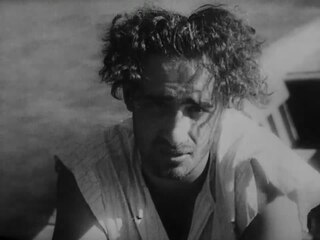
Experimental film, experimental cinema, or avant-garde cinema is a mode of filmmaking that rigorously re-evaluates cinematic conventions and explores non-narrative forms or alternatives to traditional narratives or methods of working. Many experimental films, particularly early ones, relate to arts in other disciplines: painting, dance, literature and poetry, or arise from research and development of new technical resources.

Window Water Baby Moving is an experimental short film by Stan Brakhage, filmed in November 1958 and released in 1959. The film documents the birth of the director's first child, Myrrena, by his then-wife Jane Brakhage, now Jane Wodening.

Wavelength is a 45-minute film by Canadian experimental filmmaker and artist Michael Snow. Considered a landmark of avant-garde cinema, it was filmed over one week in December 1966 and edited in 1967, and is an example of what film theorist P. Adams Sitney describes as "structural film", calling Snow "the dean of structural filmmakers."
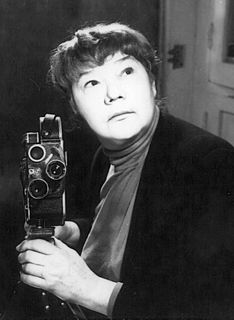
Marie Menken was an American experimental filmmaker, painter, and socialite. She was noted for her unique filming style that incorporated collage. She was one of the first New York filmmakers to use a hand-held camera and trained Andy Warhol on its use. Her film Glimpse of the Garden was selected for preservation in the National Film Registry by the Library of Congress.
R. Bruce Elder, FRSC born June 12, 1947, is a Canadian filmmaker and critic.

Mothlight is an experimental short film by Stan Brakhage, released in 1963. The film was created without the use of a camera.
Thigh Line Lyre Triangular is an experimental short film by Stan Brakhage, released in 1961, which depicts the birth of the director's third child, a daughter named Neowyn. The film, which involves painting and hand-scratching over photographic images, is more abstract than the director's earlier Window Water Baby Moving, which documented the birth of Brakhage's first-born, Myrrenna.
Eye Myth is an experimental short film by Stan Brakhage, produced in 1967. The film has a running time of only nine seconds, but took about a year to produce.
Cat's Cradle is an experimental short film by Stan Brakhage, produced in 1959. The film was described by Brakhage as "sexual witchcraft involving two couples and a 'medium' cat."
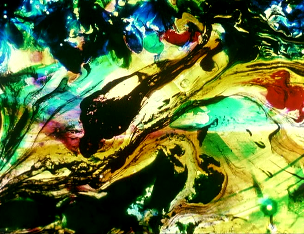
The Dante Quartet is an experimental short film by Stan Brakhage, completed in 1987. The film was inspired by Dante's Divine Comedy, and took six years to produce.
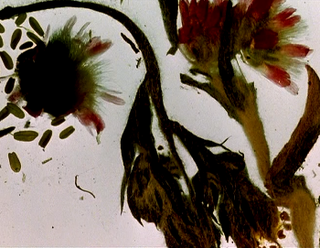
The Garden of Earthly Delights is an experimental short film by Stan Brakhage, released in 1981. The film was partly inspired by Hieronymus Bosch’s painting of the same name.
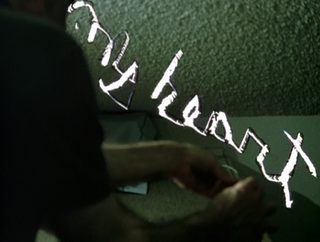
I... Dreaming is an experimental short film by Stan Brakhage, released in 1988. The film features a soundtrack of Stephen Foster songs, composed by Joel Haertling.
Fire of Waters is an experimental short film by Stan Brakhage, produced in 1965.
Betzy Bromberg is an American director, editor, and experimental filmmaker. She is the Director of the Program in Film and Video at California Institute of the Arts. Her work has been shown at the Rotterdam, London, Edinburgh, Sundance and Vancouver Film Festivals as well as the Museum of Modern Art, Museum of Fine Arts, Boston, the San Francisco Cinematheque, the Harvard Film Archive (Cambridge), Anthology Film Archives, the National Film Theater (London), The Vootrum Centrum (Belgium) and the Centre Georges Pompidou (France).
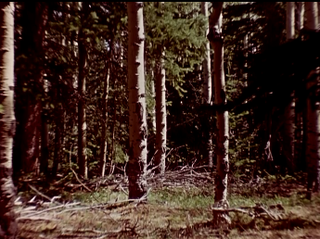
The Wold Shadow is an experimental short film by Stan Brakhage, produced in 1972.

Jane Wodening is an American artist and writer. She is best known for her collaborations with experimental filmmaker Stan Brakhage, to whom she was married from 1957 until 1987. During this period, she was known as Jane Brakhage. Wodening featured in Brakhage's short film Window Water Baby Moving, in which her husband filmed her giving birth.
Anticipation of the Night is a 1958 American avant-garde film directed by Stan Brakhage. It was a breakthrough in the development of the lyrical style Brakhage used in his later films.












